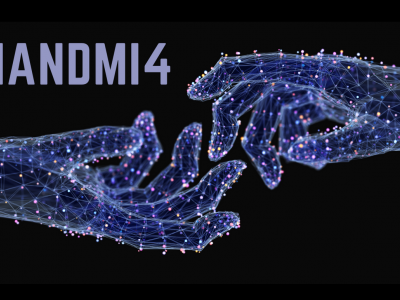3D human pose estimation

现有的多视图 3D 人体姿态估计 方法在很大程度上依赖于精确的外在校准,而 显著限制了它们在不受控制的情况下的实际部署 环境。为了解决这一限制,我们提出了一种无外在参数的多视图 3D 人体姿态估计 (EFMP) 框架,其中包含三个技术贡献。第一 提出了一种局部全局姿态嵌入 (LGPE) 方案 同时捕获细粒度的关节依赖关系 同时建立交叉视图对应关系。其次,开发了 SpatialView Joint Transformer (SVJFormer) 架构 具有三个专用组件:(1) 特征转换 调制 (FTM) 为 不同的标记来模拟异构关系模式;(2) 先验知识增强 (PKE) 系统地整合 人类运动学约束和多视图几何先验 通过结构拓扑编码进行注意力计算; (3) 空间视图联合注意力 (SVJA) 实现解耦 空间视图注意力计算,然后进行联合分布建模,以捕获分层空间视图依赖关系。 第三种是基于骨骼重投影的 Multi-view Aggregation 引入 (BPMA) 机制以整合多个 3D 输出为单个更高质量的 3D 姿势,用于实际应用。对 3 个基准测试的广泛实验表明 我们的方法实现了最先进的性能,同时 保持紧凑的模型大小。
- Categories:
 62 Views
62 Views
Can we perceive the three-dimensional posture of the whole human body solely from extremely low-resolution thermal images (e.g., $8\times8$-pixels)?
This paper investigates the possibility of this challenging task.
Thermal images capture only the intensity of radiation, making them less likely to contain personal information such as facial or clothing features.
Thermal sensors are commonly integrated into daily-use appliances, such as air conditioners, automatic doors, and elevators.
- Categories:
 95 Views
95 ViewsThis is an IMU dataset of human arm motions.
Users wear a smart watch that is equipped with IMU sensors.
A VR controller is attached to a smart watch to provide orientation and location ground truth.
The orientation and location ground truth is accurately calibrated using techniques proposed in 'Real-time tracking of smartwatch orientation and location by multitask learning'.
This dataset contains magnetic distortion feature in many data traces, which means the magnetic field does not always point to the same direction (i.e., north) in global reference.
- Categories:
 162 Views
162 Views
Evaluation of human gait through smartphone-based pose estimation algorithms provides an attractive alternative to costly lab-bound instrumented assessment and offers a paradigm shift with real time gait capture for clinical assessment. Systems based on smart phones, such as OpenPose and BlazePose have demonstrated potential for virtual motion assessment but still lack the accuracy and repeatability standards required for clinical viability. Seq2seq architecture offers an alternative solution to conventional deep learning techniques for predicting joint kinematics during gait.
- Categories:
 150 Views
150 ViewsThe dataset contains motion capture data of the human hand of 20 healthy subjects acquired using two different motion capture technology (wearable IMU and camera-based). This database provides an opportunity to expand the fields of research involving the hands or their range of mobility. Indeed, using this database to train AI's net to recognise gestures/tasks is an excellent beginning point for expanding the field of human-robot collaboration.
- Categories:
 1048 Views
1048 Views
In this paper, we propose a framework for 3D human pose estimation using a single 360° camera mounted on the user's wrist. Perceiving a 3D human pose with such a simple setup has remarkable potential for various applications (e.g., daily-living activity monitoring, motion analysis for sports training). However, no existing method has tackled this task due to the difficulty of estimating a human pose from a single camera image in which only a part of the human body is captured, and because of a lack of training data.
- Categories:
 286 Views
286 Views
